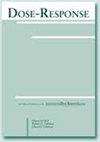Green Synthesis of Silver Nanoparticles (AgNPs), Structural Characterization, and their Antibacterial Potential
IF 2.3
4区 医学
Q3 PHARMACOLOGY & PHARMACY
引用次数: 9
Abstract
Background In the field of nanotechnology, the metallic nanoparticles are of remarkable interest because of their unique electronic, magnetic, chemical, and mechanical properties. Purpose: In the present work, silver nanoparticles (AgNPs) were synthesized using bio-reduction method. Research Design: Silver nitrate was used as metallic precursor and the extract of Moringa oleifera leaves with different concentrations was used as reducing as well capping agent. The extract exhibited strong potential in rapid reduction of silver ions for the synthesis of silver nanoparticles. The synthesized silver nanoparticles were characterized by UV-visible spectroscopy, X-ray diffraction (XRD), and scanning electron microscopy (SEM) techniques. Results: The absorption SPR peaks appeared in the range of 415 to 439 nm. SEM analysis exhibited that particles were spherical in shape with size distribution range from 10 nm to 25 nm. The synthesized silver nanoparticles were pure crystalline in nature as confirmed by the XRD spectra with average crystallite size 7 nm. In vitro antibacterial activity of the prepared silver nanoparticles colloidal samples as well the extract was studied using different concentrations of AgNPs (C1 = 100 μg/ml, C2 = 50 μg/ml, C3 = 25 μg/ml) by well diffusion method against Gram negative Escherichia coli. The antibacterial performance was assessed by measuring the zone of inhibition (ZOI). Conclusions The results suggested that AgNPs prepared by green approach can be considered as an alternative antibacterial agent.绿色合成纳米银(AgNPs)、结构表征及其抗菌潜力
在纳米技术领域,金属纳米颗粒因其独特的电子、磁性、化学和机械性能而备受关注。目的:采用生物还原法制备纳米银。研究设计:以硝酸银为金属前驱体,以不同浓度辣木叶提取物为还原剂和封盖剂。该提取物具有较强的快速还原银离子合成纳米银的潜力。利用紫外可见光谱、x射线衍射(XRD)和扫描电子显微镜(SEM)对合成的纳米银进行了表征。结果:吸收峰出现在415 ~ 439 nm范围内。SEM分析表明,颗粒呈球形,粒径分布在10 ~ 25 nm之间。XRD谱图证实,合成的银纳米粒子为纯晶,平均晶粒尺寸为7 nm。用不同浓度的AgNPs (C1 = 100 μg/ml, C2 = 50 μg/ml, C3 = 25 μg/ml),采用孔扩散法研究制备的银纳米颗粒胶体样品和提取物对革兰阴性大肠杆菌的体外抑菌活性。通过测定抑菌带(ZOI)来评价其抗菌性能。结论绿色途径制备的AgNPs可作为一种替代抗菌药物。
本文章由计算机程序翻译,如有差异,请以英文原文为准。
求助全文
约1分钟内获得全文
求助全文
来源期刊

Dose-Response
PHARMACOLOGY & PHARMACY-RADIOLOGY, NUCLEAR MEDICINE & MEDICAL IMAGING
CiteScore
4.90
自引率
4.00%
发文量
140
审稿时长
>12 weeks
期刊介绍:
Dose-Response is an open access peer-reviewed online journal publishing original findings and commentaries on the occurrence of dose-response relationships across a broad range of disciplines. Particular interest focuses on experimental evidence providing mechanistic understanding of nonlinear dose-response relationships.
 求助内容:
求助内容: 应助结果提醒方式:
应助结果提醒方式:


